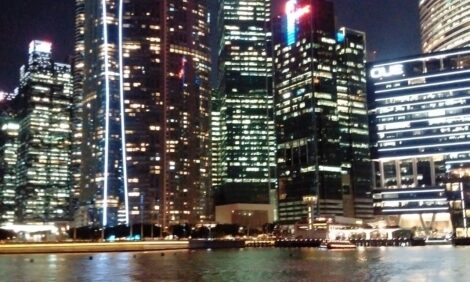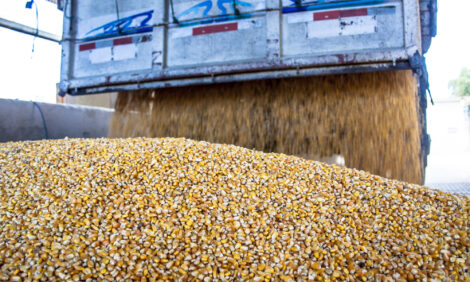



Weekly Overview: Herning Meeting Examines Hot Issues in the Danish Pig Industry
DENMARK - The Danish pig industry conference was held in Herning last week, attended by ThePigSite's Editor-in-Chief, Chris Harris, who sent a number of reports that give a good overview of the burning issues in the pig industry in Denmark today.The country's government has another year to help improve conditions for local pig farmers and slaughterhouses, explained Nicolaj Norgaard of the Danish Pig Research Centre.
At last year's annual meeting, the industry issued the 'Herning Declaration', which called for political action to help reduce the flow of finisher pigs out of Denmark and more support for the slaughterhouses to process the pigs in Denmark.
However, a year later and the number of finishing pigs being exported to Germany, Poland and Sweden is continuing to rise. The high cost of production including the high price of feed has forced Denmark's farmers to export rather than slaughter at home.
However, Mr Norgaard said that the ministry of agriculture is staring to focus of growth in employment and it sees the pig sector as an area where growth can occur.
He said: “The pig sector can be part of the solution to the welfare programme.”
On pig welfare, the country's pig sector has called for even-handed treatment across Europe over the implementation of welfare controls.
The Danish Agriculture & Food Council (DAFC) says there should be identical production control procedures to apply across the EU and a common EU control approach but a new report from the country's industry the shows that pig producers there are alone in the EU in having their farm subsidies withdrawn for non-compliance of controls undertaken at the slaughterhouse.
The report says that it is not only ‘out in the fields’ that Denmark is guilty of ‘gold plating’ of EU legislation.
Animal welfare groups, pig producers and slaughterhouses in Denmark are joining forces to create a new ‘welfare pig’.
The pig sector said that the price to consumers will lie between that for conventionally produced pork and that from pigs raised in free-range and organic systems.
The Welfare Pig plan was launched at the Herning Congress by animal welfare groups, Danish Crown, Tican and the Danish Pig Research. The welfare standards include provision of straw ad-lib, sows kept in groups throughout the production cycle and no tail-docking.
On regulation in a different field, the Danish Government was called on at the Congress to relax environment regulations in order to allow Danish farmers to add more fertiliser to their land to increase feed quality and reduce pig meat production costs.
This would improve grain yields and improve the protein quantity in the grain and improve the feed quality for the pig population, according to Asger Krogsgaard, vice chairman of the Danish Agriculture and Food Council and Vice President at Danish Crown.
With many pig farmers in Denmark also growing grain on their farms for feed, an improvement in yields and quality would mean they would also be less reliant on imports of soybean meal and cereals.
Hopes are growing in Denmark that a revolutionary proposal from the meat workers union at Danish Crown to support the country's farmers and production can be resurrected.
The plan put forward by the union to the management of Danish Crown would have seen workers sacrifice some of their wages to pay into a support fund for primary production. However, the proposal, which is believed would have seen meat plant workers sacrifice about DKK,1000 per month was narrowly voted down by the workers last month.
With African Swine Fever (ASF) not so very far from the country in eastern Europe and Russia, the Danish pig industry is operating a strict biosecurity screening to ensure that is not carried into the country from Russia.
With more than 10 million pigs being exported from Denmark annually and many of the exports going to Russia, Poland and Ukraine, the Danish pig industry is concerned that ASF could be brought back into the country on lorries.
The Danish authorities have now established centres to wash the lorries down as they re-enter Denmark following an export run.







